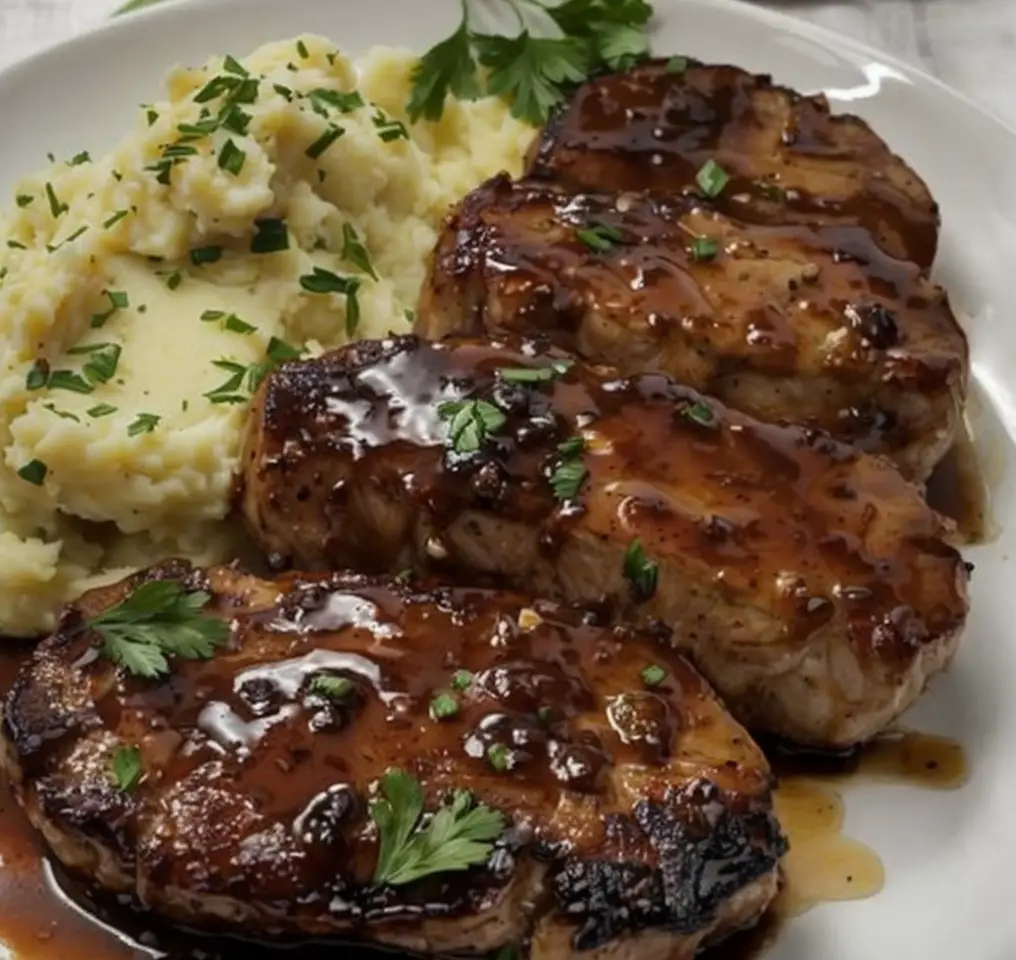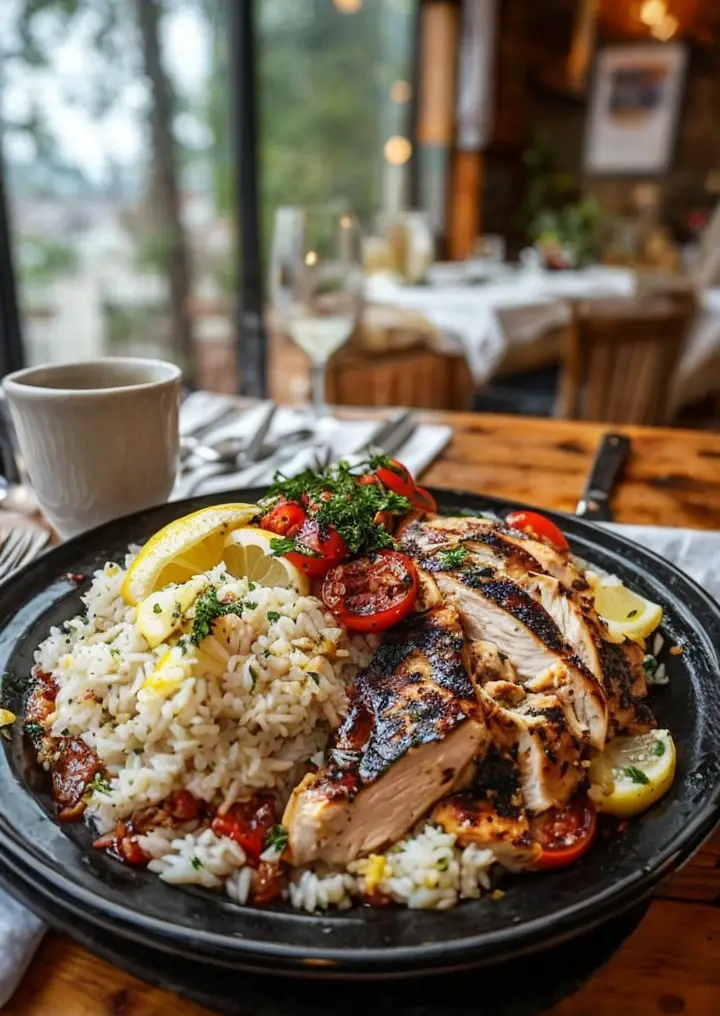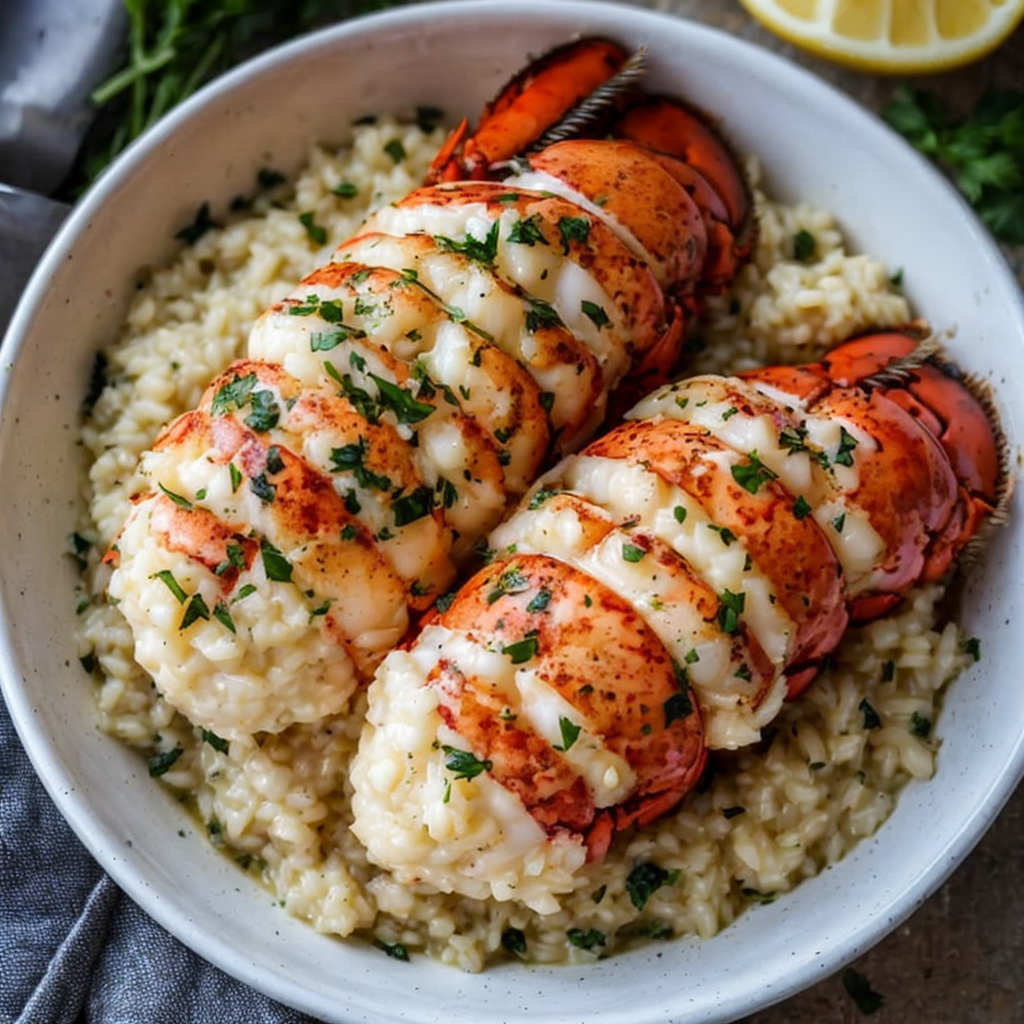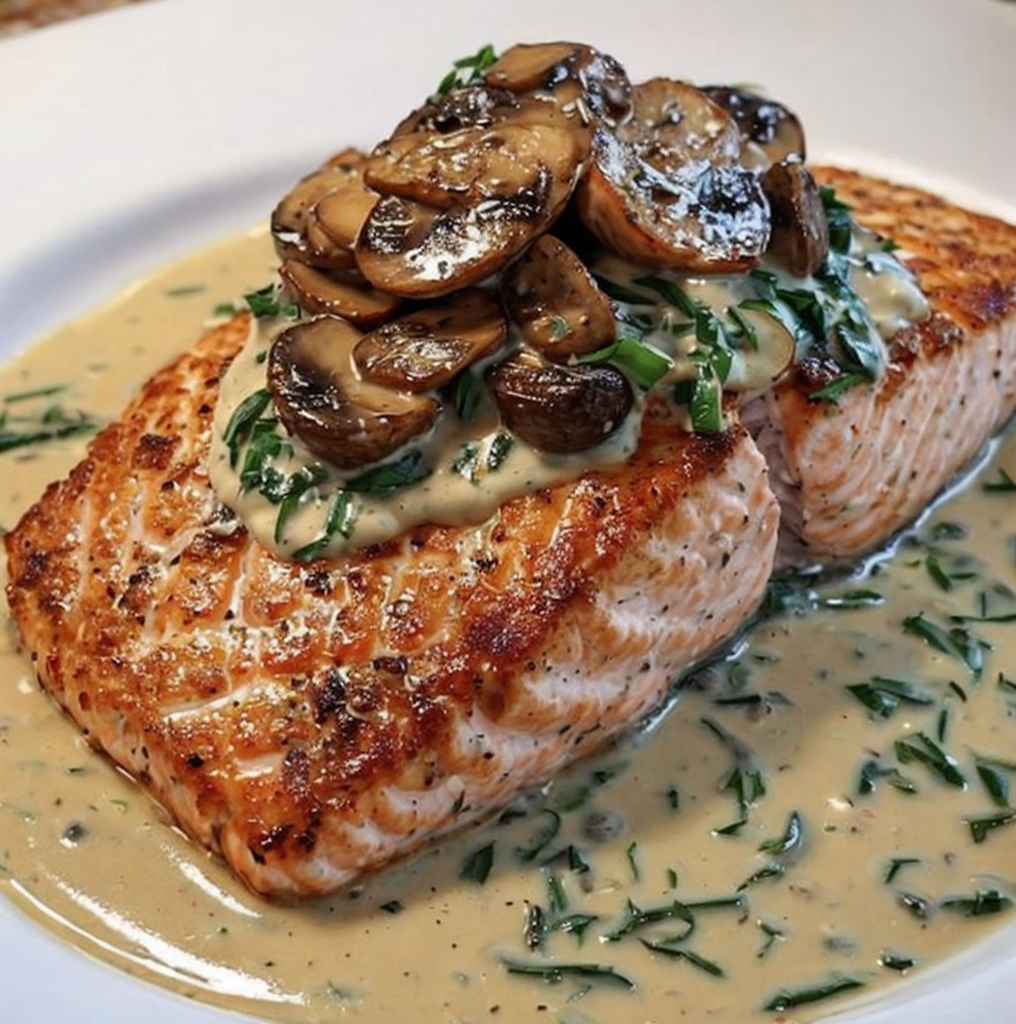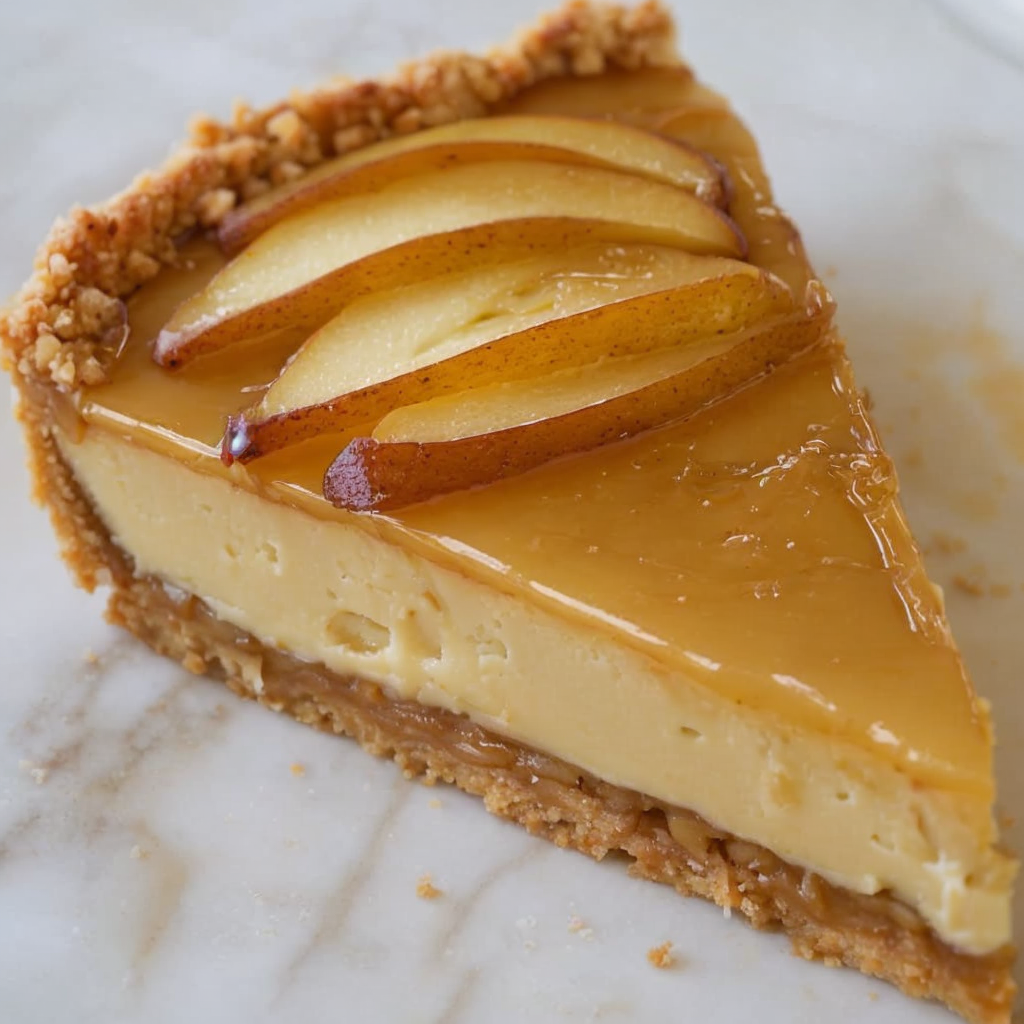Honey Garlic Pork Chops with Mashed Potatoes: A Flavorful Comfort Food Delight
Pork chops are a beloved staple in many households, and with this Honey Garlic Pork Chops recipe, they reach new heights of flavor and tenderness. The sweet, sticky honey garlic sauce perfectly complements the juicy pork, creating an irresistible combination that will have everyone asking for seconds. Served alongside creamy mashed potatoes, this dish epitomizes comfort food, making it an ideal option for family dinners, weeknight meals, or special occasions.
Imagine sinking your fork into a tender pork chop glazed with a delightful honey garlic sauce, bursting with flavor and served with velvety smooth mashed potatoes that soak up every bit of the sauce. The contrast of savory and sweet delivers a flavorful punch that pleases the palate and warms the heart. Easy to prepare and utterly delicious, this recipe is guaranteed to become a household favorite.
Quick Recipe Highlights
- Flavor Profile: The honey garlic sauce brings a perfect blend of sweetness and umami, enhancing the natural flavor of the pork while adding depth and richness.
- Texture: The pork chops remain juicy and tender, while the mashed potatoes provide a creamy, hearty contrast that rounds out the meal.
- Aroma: The aromas of garlic and honey wafting through your kitchen will tantalize your senses, making your mouth water in anticipation of this meal.
- Visual Appeal: Golden-brown caramelized pork chops paired with a fluffy mound of mashed potatoes create a visually stunning plate that will impress your dinner guests.
- Skill Level Needed: Perfect for home cooks of all levels, this recipe requires basic cooking knowledge and easy-to-follow steps.
- Special Equipment: A skillet or frying pan is needed, as well as a pot for boiling potatoes for the perfect mash.
Recipe Overview
- Difficulty Level: The Honey Garlic Pork Chops recipe is marked as easy due to its straightforward preparation and quick cooking time, allowing even novice cooks to shine.
- Category: This recipe falls under main dishes, making it a suitable centerpiece for lunch or dinner.
- Cuisine: Rooted in American cuisine, this dish integrates influences from Hoisin and Asian-style sauces, showcasing a blend of culinary traditions.
- Cost: The cost is relatively low, with pork chops and potatoes being budget-friendly ingredients, making it an accessible option for dinners without compromising on experience.
- Season: Ideal for all seasons, it’s particularly comforting during the fall and winter months when hearty dishes are most appreciated.
- Occasion: Perfect for family gatherings or weeknight meals, this dish suits any occasion where comfort food is desired.
Why You’ll Love This Recipe
The flavor and texture of these Honey Garlic Pork Chops create a taste sensation that your family is sure to love. The sweetness of the honey contrasts beautifully with the savory notes from the garlic, resulting in a delicately balanced dish that excites every bite. The mashed potatoes provide a creamy counterpart, creating a harmonious pairing that enhances the overall dining experience.
In terms of convenience, this recipe shines. With a total preparation and cooking time of just 35 minutes, it fits seamlessly into a busy schedule without sacrificing quality or flavor. It’s an ideal recipe for weekdays, allowing you to deliver a homely meal in minimal time. Additionally, cleanup is simple, ensuring that you spend more time enjoying your meal rather than laboring in the kitchen.
Nutritionally, pork is a great source of protein and contains essential vitamins and minerals like B vitamins and zinc, which are important for maintaining energy levels and supporting immune function. Paired with mashed potatoes, this dish also offers a comforting source of carbohydrates, perfect for a balanced meal.
Socially, this Honey Garlic Pork Chops recipe is perfect for entertaining guests. Its captivating aroma and beautiful presentation will wow your friends, making it an impressive choice for dinner parties or gatherings. You’ll find that your guests will be eager to ask for the recipe, bolstering camaraderie over shared meals.
Lastly, the cost-effectiveness of the ingredients makes this dish accessible for anyone looking to create a delicious meal without breaking the bank. Pork chops are often on sale, and staple ingredients like honey, garlic, and potatoes are commonly found in most pantries. With this recipe, tasty comfort food is always within reach.
Historical Background and Cultural Significance
The origins of pork as a dietary staple can be traced back thousands of years, with various cultures embracing it in their cuisines. Historically, honey has also been recognized for its unique sweetness and preservative qualities, making it a cherished ingredient in many cultures. The combination of honey and garlic in cooking has roots in Asian cuisines, where sauces featuring both elements are common.
In American culture, pork has been a cornerstone of cuisine for generations. Cookouts, barbecues, and family gatherings have commonly featured pork as the main attraction. This recipe, blending garlic and honey with a simple preparation, speaks to the home-cooked meals that bring families together and encourage sharing stories around the dinner table.
Over the years, the preparation of pork chops has evolved significantly. From the traditional frying to the incorporation of marinades and glazing, this dish adapts to modern cooking trends while retaining its comfort-food essence. Regional variations have introduced diverse spices and techniques, showcasing the adaptability of pork throughout the U.S.
Many cooks have their spin on honey garlic pork dishes. From glazes to slow-cooked variations, this recipe will inspire you to explore further, leading to creative variations that reflect personal tastes and culinary backgrounds. Embracing local ingredients and methods truly brings this beloved dish into the homes of countless families, honoring both tradition and innovation.
Ingredient Deep Dive
Pork Chops
Pork chops are a versatile protein, rich in essential nutrients including protein, B vitamins, and selenium, contributing to overall health and well-being. When selecting pork chops, look for a pinkish-red color with minimal visible fat for optimal flavor and tenderness. Avoid any that appear gray or dry.
To store pork chops, keep them in the refrigerator for up to three to five days. If you purchase in bulk, consider freezing them in portions for later use. Alternatives include chicken or turkey cutlets that can mimic the texture while altering the flavor profile.
Honey
Honey has been utilized for centuries as a natural sweetener, recognized for its health benefits including anti-inflammatory properties. When selecting honey, opt for raw or organic varieties to benefit from its natural enzymes and antioxidants.
Store honey in a cool, dark place to maintain its quality; it has an indefinite shelf life due to its natural preservatives. If you find yourself without honey, consider substituting with maple syrup or agave nectar, keeping the balance of sweetness in mind.
Garlic
Garlic is not only an aromatic addition to many dishes, but it also boasts numerous health benefits, including antibacterial properties and enhanced immune support. When buying garlic, choose firm, plump bulbs and avoid any that show signs of sprouting.
To maximize freshness, store garlic bulbs in a cool, dark environment. If fresh garlic is not available, garlic powder can be used as a substitute, adjusted according to taste preference.
Mashed Potatoes
Mashed potatoes provide a comforting and versatile side to many dishes. Rich in carbohydrates and vitamins, they are best made with starchy potatoes like Russets or Yukon Golds for a creamy texture. When not using immediate, storing peeled potatoes in water can prevent browning.
Store leftovers in an airtight container in the refrigerator for up to three days. If you wish to modify the recipe, consider dairy-free alternatives like almond milk or olive oil for a lighter mash without sacrificing flavor.
Common Mistakes to Avoid
- Overcooking the pork chops can lead to dryness; aim for an internal temperature of 145°F and let them rest after cooking.
- Not allowing the pan to heat before adding the pork can prevent the chops from searing properly, resulting in a less flavorful exterior.
- Skipping the marination step can diminish the flavor; allow the pork to rest in the honey garlic sauce for at least 15 minutes before cooking.
- Using cold ingredients can lower the cooking temperature, preventing even cooking; ensure pork is at room temperature before cooking.
- Not mashing potatoes adequately can lead to lumps; use a potato masher or ricer for the smoothest results.
- Adding salt at the wrong stage can alter flavors; salt potatoes before mashing while adjusting seasonings can prevent overpowering the dish.
- Using too much honey can make the dish overly sweet; balance sweetness with the garlic and acid as needed.
- Not tasting throughout can lead to a lack of flavor; adjust seasonings progressively to enhance the dish.
- Letting cooked ingredients sit too long without serving can negatively affect food quality; serve warm for the best experience.
- Skipping the garnish might leave your dish looking less appealing; a sprinkle of fresh herbs elevates presentation.
Essential Techniques
Searing Pork Chops
Searing is crucial as it locks in moisture and enhances flavor through caramelization. To master this step, start with a hot skillet and do not overcrowd the pan. Look for a golden color around the edges as a visual cue of readiness. Common pitfalls include using too low heat, which can lead to steaming instead of browning.
Mashing Potatoes
For perfect mashed potatoes, begin by boiling peeled potatoes until fork-tender, then drain and mash while still hot. The key is to use a ricer for the creamiest texture and avoid overworking them. The common mistake here is to use cold ingredients, so opt for warm milk or cream for a fluffy result.
Making a Sauce
Creating a honey garlic sauce is as simple as combining honey, minced garlic, and soy sauce in a pan. It’s important to cook it down to concentrate flavors without burning the garlic. A frequent error is not tasting the sauce; adjust sweetness or acidity before serving.
Pro Tips for Perfect Honey Garlic Pork Chops
1. Marinate the pork for at least 30 minutes to infuse flavor deeply and enhance tenderness before cooking.
2. Always preheat your skillet until hot to achieve a perfect sear on the pork chops and lock in the juices.
3. Let the pork rest for five minutes after cooking; this allows the juices to redistribute, keeping the meat juicy.
4. Use fresh garlic instead of powdered for a more vibrant flavor in your sauce.
5. Experiment with your favorite herbs, like thyme or rosemary, to complement the sweetness of the honey in the sauce.
6. For added texture, finish the dish with a sprinkle of sesame seeds or chopped green onions.
7. Reduce the sauce longer for a thicker glaze, which will coat the pork beautifully.
8. If you prefer less sweetness, balance with a splash of vinegar or citrus to enhance flavor complexity.
Variations and Adaptations
This Honey Garlic Pork Chops recipe can be easily adapted to fit dietary preferences. For those seeking lower carbohydrate content, try substituting mashed potatoes with a creamy cauliflower mash, providing the same comfort without the extra starch.
Conversely, if looking for zest, consider adding a touch of lime to the honey garlic sauce for a bright flavor twist. You may also experiment with different proteins, such as chicken breasts or even firm tofu, providing flexibility for various diet needs.
Regional variations could involve experimenting with spices typical to southern or Asian-inspired dishes. For instance, incorporating chili flakes or ginger could lend an exciting kick to the traditional recipe. Enhance presentation by serving with colorful sautéed vegetables or a salad for a complete meal experience.
Serving and Presentation Guide
Presenting your Honey Garlic Pork Chops doesn’t have to be complicated. Begin with a clean, white plate to allow the colors of the food to pop. For a classy touch, stack the mashed potatoes on one side of the plate, then lay the pork chop slightly askew for a modern effect.
Garnishing with freshly chopped parsley or chives adds a pop of color and freshness to your dish. Consider drizzling a little of the honey garlic sauce over the mashed potatoes for visual appeal. Pair it with seasonal vegetables like steamed green beans or a colorful salad to bring balance and elevate your dish’s presentation further.
When serving, remember the temperature; hot food is best enjoyed warm and fresh. Heat all components correctly and serve immediately to ensure the best tasting experience.
wine and Beverage Pairing
For the perfect wine pairing with Honey Garlic Pork Chops, opt for a medium-bodied red like Pinot Noir or a fruity white such as Riesling. Both complement the sweetness of the honey while balancing the richness of the pork.
If you prefer non-alcoholic options, consider pairing the dish with a refreshing iced tea with lemon or a homemade lemonade that similarly balances sweetness and acidity. Additionally, serving a light lager or a pale ale can harmonize beautifully with the savory aspects of the pork, enhancing the overall dining experience.
When serving these beverages, remember to chill white wines and non-alcoholic drinks before serving, ensuring they provide a refreshing contrast to the warm dish.
Storage and Shelf Life
To store leftover Honey Garlic Pork Chops, place them in an airtight container in the refrigerator. Properly stored, they will last for up to three days. If you want to extend their shelf life, consider freezing them; they can last up to three months when stored correctly.
When reheating, avoid microwave heating as it tends to dry out meat. Instead, reheat in the oven at a low temperature covered with foil to retain moisture. For mashed potatoes, store in a separate container; they also hold well in the fridge for a few days.
Check for signs of spoilage by looking for off-smells or discoloration on the pork before consumption. With reheating, make sure to stir well and adjust with a little milk or cream if they have thickened.
Make Ahead Strategies
To make advanced preparations for Honey Garlic Pork Chops, marinate the pork the night before and store it in the refrigerator. This allows flavors to penetrate deeply, enhancing their taste. You can also prepare the mashed potatoes ahead of time.
Simply boil and mash the potatoes, then store them in the refrigerator, and reheat with a bit of milk when ready to serve. Alternatively, you can cook the pork chops fully ahead of time and reheat them briefly in the oven before dinner, ensuring they remain juicy and flavorful.
Be mindful of timing; when making components ahead, factor in the time needed for them to come to room temperature before serving to maintain optimal taste and texture.
Scaling Instructions
If you need to scale the Honey Garlic Pork Chops recipe, halving the ingredient amounts is straightforward and maintains the flavor balance. For doubling or tripling the recipe, ensure you have enough cooking space and consider cooking in batches to avoid overcrowding the pan.
Adjust cooking times minimally, but always check the internal temperature of the pork to ensure safe consumption. Keep in mind that you may need to adjust the amount of sauce as well to correspond with the increased portions, ensuring each piece is adequately coated.
If storing leftovers, use larger containers to accommodate increased amounts or split them into smaller portions to facilitate quicker cooling and reheating.
Nutritional Deep Dive
Each serving of Honey Garlic Pork Chops is packed with approximately 350 calories, providing a good balance of macronutrients. The pork chops provide high-quality protein, essential for muscle repair and growth. They also contain a range of B vitamins, crucial for energy production.
In terms of micronutrients, the addition of garlic contributes beneficial compounds known for potential health benefits, such as enhanced immune function. Mashed potatoes add carbohydrates and are a source of potassium, which can support cardiovascular health.
Consider portion control when serving. For weight management, balancing the protein with ample vegetable sides while monitoring starch intake can help promote a healthy diet.
Dietary Adaptations
For those needing a gluten-free option, the Honey Garlic Pork Chops naturally fit the bill, ensuring a delicious, safe meal for those with gluten sensitivities. To create a dairy-free version of the mashed potatoes, substitute milk with almond milk, and opt for olive oil instead of butter for creaminess.
For those pursuing a vegan lifestyle, try mimicking the honey garlic flavor using jackfruit marinated in an adapted honey-free sauce. While the texture will differ, the bold flavors will provide a satisfying option for a plant-based diet.
If you’re looking for low-carb options, consider sweet potatoes or cauliflower mash instead. Additionally, variations can cater to keto diets by ensuring no added sugars in the sauce while maintaining the savory flavor profile.
Troubleshooting Guide
If you encounter texture issues with your pork chops, ensure that your cooking temperature is hot enough for a proper sear to lock in moisture. For undercooked meat, always check internal temperatures after cooking to ensure safety.
Balancing flavors can sometimes be tricky; if your sauce becomes too sweet, adding a splash of vinegar can elevate the taste perfectly. If your garlic flavor dissipates, try quickly sautéing additional minced garlic just before serving to boost that aromatic freshness.
If timing concerns arise, remove the pork from the heat prior to the last minute of cooking and let it rest; this allows for ideal doneness without overcooking. If you’re overwhelmed, enlist help with prepping ingredients to ensure a smooth cooking flow.
Recipe Success Stories
Feedback from readers of this recipe has been overwhelmingly positive, with many sharing stories about their families enjoying the Honey Garlic Pork Chops at special gatherings. One reader noted how the dish had quickly become a go-to for weeknight dinners due to its ease and delightful flavors.
Variations shared by the community speak to the adaptability of the recipe; from spice levels to incorporating seasonal produce, home cooks found success in their expressions of this classic dish. Photography tips shared in the comments showcase beautiful plating and garnishing ideas that others can learn from.
Readers also appreciate the engaging storytelling in the recipe’s commentary, making them feel more connected to the cooking process. Those who shared their adaptations noted that it inspired them to experiment further, resulting in exciting new takes on a classic comfort food.
Frequently Asked Questions
Can I use other cuts of pork for this recipe?
Yes, you can use pork loin or tenderloin instead of chops for a different texture and flavor while still applying the same honey garlic sauce.
How can I prevent my pork chops from drying out?
Ensuring your skillet is preheated and not overcooking the pork is key; check doneness with a meat thermometer to prevent drying.
Is it okay to marinate the pork for longer than 30 minutes?
Yes, marinating for up to 4 hours can enhance flavor; however, don’t exceed this time to avoid overly softening the meat.
What if I don’t have honey?
You can substitute honey with maple syrup or agave nectar, but adjust the amount to match the sweetness level you prefer.
Can I double or triple the recipe?
Absolutely! Just ensure to readjust the cooking time and space accordingly to avoid overcrowding in the pan.
What can I serve with Honey Garlic Pork Chops?
Complement the chops with sides like roasted vegetables, salad, or the classic mashed potatoes featured in the recipe for a well-rounded meal.
How do I store leftovers?
Leftover pork chops should be stored in an airtight container in the fridge and can last up to three days. For longer storage, freeze them.
Can this recipe be made in advance?
Yes, you can marinate the pork in the morning and cook it later in the day or prepare the mashed potatoes ahead as well.
How do I reheat leftovers?
Reheat the chops gently in a preheated oven or on the stovetop over low heat covered to retain moisture.
Is this dish suitable for children?
Yes, the sweet and savory profile of that honey garlic pork chop usually appeals to children, making it a family-friendly option.
Additional Resources
To further explore culinary delights, check out our related recipes featuring different flavor profiles and cooking techniques. Each offers unique insights into creating memorable meals. Consider browsing technique guides for mastering your cooking skills, especially for searing meats and making flavorful sauces.
Additional ingredient information is available for finding high-quality meats and produce, ensuring fresh flavors in every meal. Equipment recommendations can assist with selecting the best tools to enhance your efficiency and effectiveness in the kitchen. Seasonal variations will also inspire you to shift your meals with the changing seasons, keeping your cooking fresh and exciting.
Join the Conversation
We love hearing your thoughts on our recipes! Share your experiences, modifications, and the delightful moments you create around the dinner table with your loved ones. Connect with us on social media, where you can post your successful Honey Garlic Pork Chops outcomes and tag us to engage in a lively community.
If you’re experimenting with different plating techniques for photos or have stories about family dinner nights, we encourage you to share those, too. Your feedback inspires us to continuously create more recipes that resonate with you. Let’s create a delicious community of food lovers together!
The Recipe
Honey Garlic Pork Chops
Serves: 4
Prep Time: 15 mins
Cook Time: 20 mins
Total Time: 35 mins
Kitchen Equipment Needed
- Skillet or frying pan
- Pot for boiling potatoes
- Potato masher or ricer
- Meat thermometer
Ingredients
- 4 boneless pork chops
- ¼ cup honey
- 4 cloves garlic, minced
- 2 tablespoons soy sauce
- 1 pound potatoes, peeled and cubed
- ½ cup milk
- 2 tablespoons butter
- Salt and pepper to taste
Directions
- In a small bowl, combine honey, garlic, and soy sauce to create the marinade.
- Marinate the pork chops for at least 15 minutes, ideally longer for more flavor.
- While the pork is marinating, boil the potatoes in salted water until tender, about 15-20 minutes.
- Heat a skillet over medium-high heat and sear each pork chop for 5-7 minutes on each side until cooked through.
- Remove the pork and let it rest; meanwhile, simmer the marinade in the skillet for a few minutes until slightly thickened.
- Drain the potatoes and mash with butter, milk, salt, and pepper until creamy.
- Serve the pork chops drizzled with the honey garlic sauce, alongside the mashed potatoes. Enjoy!
Recipe Notes
- For added flavor, try adding herbs like rosemary or thyme to the marinade.
- Ensure the pork is at room temperature before cooking for even results.
- If you want a spicier dish, add a pinch of red pepper flakes to the marinade.
- Mashed potatoes can be made ahead of time and reheated with a bit of milk for perfect creaminess.
